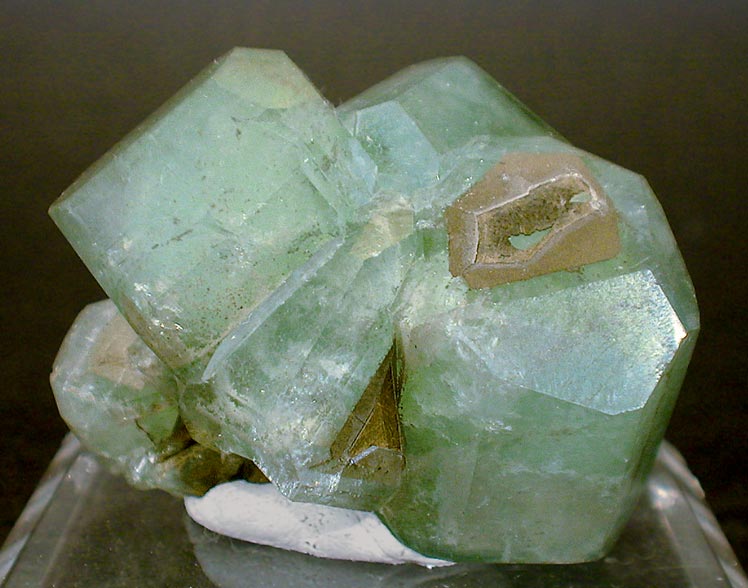| Crystal system | Monoclinic |
| Transparency | Transparent to opaque |
| Luster | Vitreous |
| Fracture | Conchoidal to Uneven |
| Cleavage | None |
| Specific Gravity | 2.95 |
| Hardness | 5 to 5.5 |
| Optical Character | Biaxial - ; Double Refractive |
| Refractive index | 1.626-1.670 |
| Birefringence | 0.044 |
| Dispersion | 0.016 |
| Fluorescence | Blue color |
| Pleochroism | |
| Chemical Formula | Ca(B4OH)SiO4 |
| Comments | Attacked by HCl |
| Streak | |
Datolite (DAT-oh-lite) is another rarely encountered mineral that, because it is found in a transparent to translucent form, is sometimes cut and polished. Although it is usually colorless, it may be pale green or pale yellow; the tone, however, is too light to make particularly attractive stones. In addition, it is rather soft, having a hardness of 5 to 5 1/2. One nearly opaque variety bears a close resemblance to the mineral thomsonite; another resembles the type of chalcedony that has a colorful reddish cast imparted by minute flakes of copper. Pale red, violet and grayish material also sometimes occurs.
Like danburite, datolite is a hydrated calcium borosilicate, expressed by the formula Ca(B4OH)SiO4. It crystallizes in the monoclinic system, usually in short prismatic crystals, but sometimes in highly modified forms. It may also be massive, granular to compact and cryptocrystalline. The name of the species comes from the Greek word meaning "to divide", in reference to the granular structure of its massive variety. It has no observable cleavage, a conchoidal to uneven fracture, and a white streak. There are no characteristic inclusions. The refractive indices are 1.626 and 1.670, which gives a high birefringence of .044. It is biaxial negative. The low dispersion (.016) is about the same as that of danburite. In addition, it has a vitreous luster and a specific gravity of 2.90 to 3.00. No phenomenon is exhibited. It fuses easily and is attacked by hydrochloric acid. In contrast to other borosilicates, datolite is very readily identified by its large birefringence at this point on the refractometer scale. This is at least double that of tourmaline.
Sources of this mineral include northern Michigan, New Jersey and several places in Europe and Cornwall. The best transparent material comes from Habachtal, in the Austrian Alps, a locality that is better known for its production of emeralds. Datolite is found chiefly as a secondary mineral in veins and cavities in basic igneous rocks, often associated with calcite, prehnite and various zeolites. It may also occur with danburite.
Transparent material is fashioned in either the brilliant- or step-cut style. Massive material is cut in the cabochon form. Cabochones should be sanded on a very fine cloth and polished on a felt lap with cerium oxide; an alternate method is to use Linde A powder on a leather wheel. Faceted stones may be polished on lucite laps with tin oxide or on tip laps with Linde A.
Datolite seems to have a variable hardness with direction and the facet junctions tend to crumble; a change in the polishing direction often seems to overcome this difficulty. A crown angle of 43° and a pavilion angle of 39° prove satisfactory.


